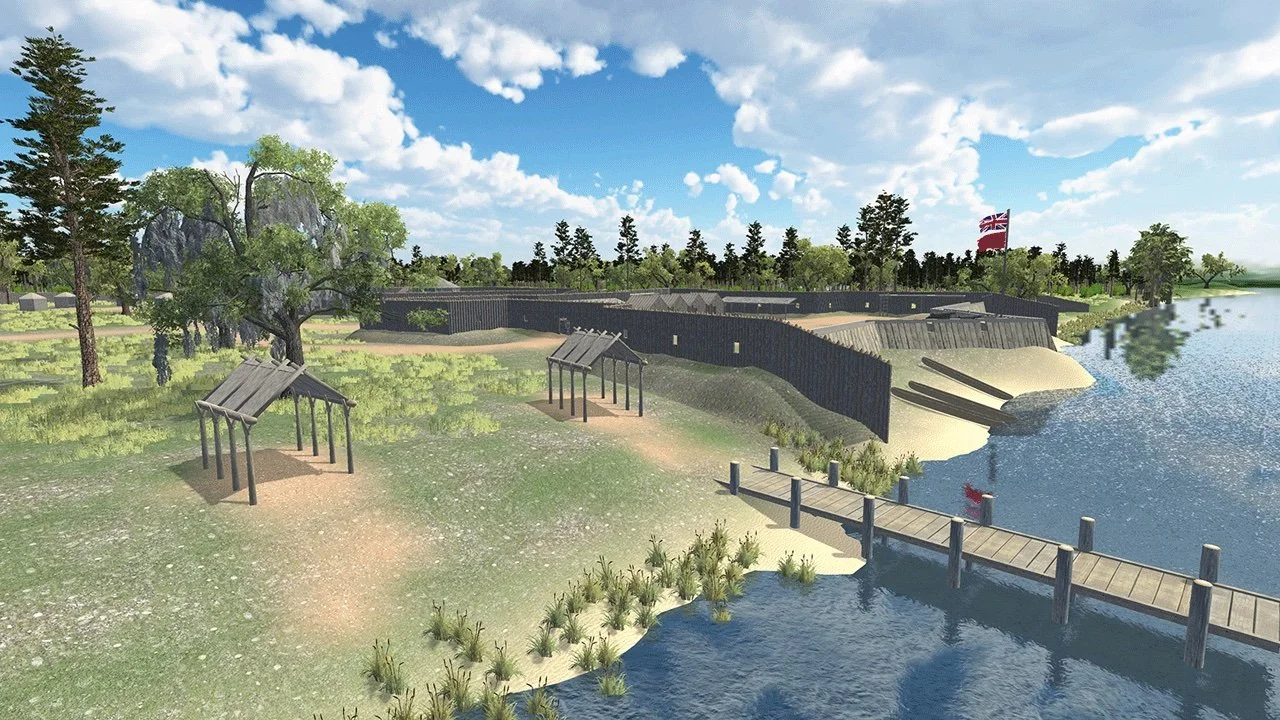a narrative series
Synopsis
It is said that you can’t make an omelet without breaking some eggs… The United States of America was born of lofty ideals deserving of celebration but with tremendous bloodshed in a cauldron of genocide, slavery, racism, sexism, and empiricism where the ends justified all means. And this needs to known and remembered because even now, hundreds of years hence, the country is still paying for these misdeeds and paying with blood. Season by season, these are the stories of where the country came from and what, and who, it destroyed along the way in order to become what it became.
Uncut. Unvarnished. This is America.
Overview (Season One)
Season One is based on a story that takes place mostly from around 1810 to 1816 in the Florida panhandle just a few decades after the United States came into existence. At the time, parties taking an interest in the land were the Spanish, the British, Americans, escaped slaves, various Indian tribes, and Caribbean pirates. Florida didn’t exist as a state at that time and was owned and occupied by the Spanish. The British decided to launch a campaign to retake the country by first taking back the city of New Orleans. Their plan was to build a large fort in a defensible position as a staging ground for this and other battles and to fill the fort with an army made up of native americans and escaped slaves. Escaped slaves would be freed upon joining the British Army because the Crown had recently abolished slavery. Native Americans were fighting for their land, land the British promised to return to them upon defeating the Americas. The Fort at Prospect Bluff (later to be termed the Negro Fort) was located on the Apalachicola River about 15 miles north of Apalachicola, FL. Some of the principal actors in this story were the sons of Indian women and white traders or white soldiers. There were lots of shifting alliances, political maneuverings, spying, brutal violence, and general mayhem.
There were many battles on land and at sea between native american tribes, the British, the Americans, the Spanish, the American settlers, escaped slaves, and even pirates. In the leadup to the climax, the British lose the Battle of New Orleans in dramatic fashion propelling them to abandon FPB and leave it in the hands of their former army which at that point was comprised mostly of escaped slaves.
The existence of FPB, as the largest free black settlement in North America, was not something the Americans could not stomach. There were therefore several subsequent failed attempts by the Americans to destroy the fort and reclaim the escaped and freed slaves. The climax of this story is the final attempt and the explosion that occurred at the Fort at Prospect Bluff (FPB), or the Negro Fort as it was then called by the Americans. The explosion was the result of a lucky hot cannonball, a hotshot, launched by a US Navy vessel two miles away that recocheted off a tree and hit the main magazine. With 250 to 300 people killed in this explosion it is termed the “deadliest canon shot in American history.” Almost all those killed were Black or Native American.
This is a story of Native Americans fighting to preserve their lands, Maroons (escaped slaves) making a desperate stand to protect their freedom, U.S. and British troops confronting each other during the War of 1812, and a shocking attack and its bloody aftermath.
Source Material (Season One)
Characters (Season One)
Mary Ashley (18 year old escaped slave from St Augustine who fought at Fort and survived)
Edward Nicholls (British Royal Marines Commander. Strong abolitionist and straight dealer with Indian tribes)
Admiral Sir Alexander Cochrane (Commander of British forces in North America)
Andrew Jackson
Edmund P.Gaines (American General. Directed the efforts to close or destroy the Fort and recover the slaves)
Duncan L. Clinch (American Colonel who led unsuccessful attack on the Fort from the north)
Benjamin Hawkins (U.S. / Indian Agent. Friend of George Washington. His job was to clear Indian resistance to the construction of roads to the West which would encourage settlement by American frontiersmen)
John Quincy Adams (U.S. Secretary of State)
Garçon (Negro leader of the Fort. Probably an escaped slave who was trained by the British and became part of their colonial marine company and prior to the attack on the fort, he operated a farm with his family within a few miles of the fort)
(Choctaw chief at the Fort. He and Garçon were executed after the explosion.)
Neamathla (Seminole leader)
Boleck (leader of Alchua Seminoles and friend to the Maroons)
Peter McQueen (Red Stick War chief from Tallahassee town of Upper Creek: son of Muskogee woman and Scottish trader)
Prophet John Francis of Red Stick Indians ( aka warrior of Tuskegee)
Sailing Master Basset (US navy officer who commanded Gunboat 154 which launched the cannon shot that led to the explosion of the magazine at the Fort)
Abraham (26 year old Seminole negro survivor of explosion at the Fort who eventually died in Oklahoma at age 80-90.)
There are other interesting characters who play bit rolls in this story but are pretty well known for their exploits during this crazy period of time such as:
Davy Crockett
Timeline (Season One)
1790. Treaty of New York between US and Upper Creek Indians. Americans said treaty gave them permission to build a federal trail westward to Mississippi.
1811. Year of Creek National Council, which Americans said gave them permission to build bridges on the federal road and to widen the road.
1813. Sons of Thomas Perryman, a Native American Chief, attacked by Georgians. Perryman who fought with British in American Revolution, asks British for help. Civil war breaks out between Members of Creek Nation, with Upper Creeks allied with Americans and lower Creeks with British. The Lower Creeks are sometimes referred to as Red Sticks on account of their war clubs. US supported Upper Creeks and attacked Red Sticks. Battle of Burnt Corn Creek. Battle for Fort Mims.
1814. Andrew Jackson successfully attacks Red Sticks at Horseshoe Bend on Tallapoosa River. Surviving Indians retreat to Florida panhandle but face starvation. British gunship, HMS Orpheus, with 26 guns, anchors off Saint George Island in response to Perryman’s request for help against the Americans. British unsuccessfully attack Fort Bowyer near Mobile. Andrew Jackson enters Pensacola. Nicolls begin construction of FPB
Dec 24, 1814. Treaty of Ghent signed, ending War of 1812. But word of peace did not reach these parts for months...
1815. Hawkins emissary visits Prospect Bluff, asks for return of Georgia slaves. Big Indian council at Nicoll’s outpost (second fort upriver of FPB). British begin evacuation of forts. Spanish emissary visits fort, seeks return of Pensacola slaves. Large group of blacks leave fort with British bound for Bermuda. Nicolls leaves Apalach Bay. Fort at PB prospers. Militia conducts daily exercises. Mary Ashley fires morning and evening gun. American newspapers start referring o FPB “Negro fort”.
1816. Gen Gaines oks attack on FPB by Col Hawkins with help from Lower Creek warriors informs Maj Gn Andrew Jackson. Gaines oks back up attack by Clinch. Clinch begins journey down Chattahoochee south from Georgia. Sailing Master Loomis placed in charge of gun boats. At Gaines request US navy sends gunboats to Appalach to support soldiers traveling. Gunboat and boat from FPB exchange fire at Apalach. Clinch negotiates alliance with William McIntosh and 150 Indians for attack downriver. Three members of Loomis party killed in sniper attack by Garçon’s men. Clinch party arrives one mile north of FPB. Fort exchanges fire with Clinch troops. Clinch demands surrender of fort. Fort responds with red flag. Fort population about 100 men, 200 women and children. Hot shot from Gunboat 154 ignites magazine in Fort causing massive explosion. Gunboat was two miles downstream at extreme range for its cannon. 50 survivors including Garçon and Chocktaw Chief and Mary Ashley. Garçon and Chief executed by Creek warriors. Survivors scatter and are unaccounted for. Many die of wounds. Some slaves recaptured.
1843. Mary Ashley petitions Spain for her freedom in Havana Cuba.
The Fort at Prospect Bluff (aka Negro Fort)
A virtual recreation of the Fort at Prospect Bluff.



















































